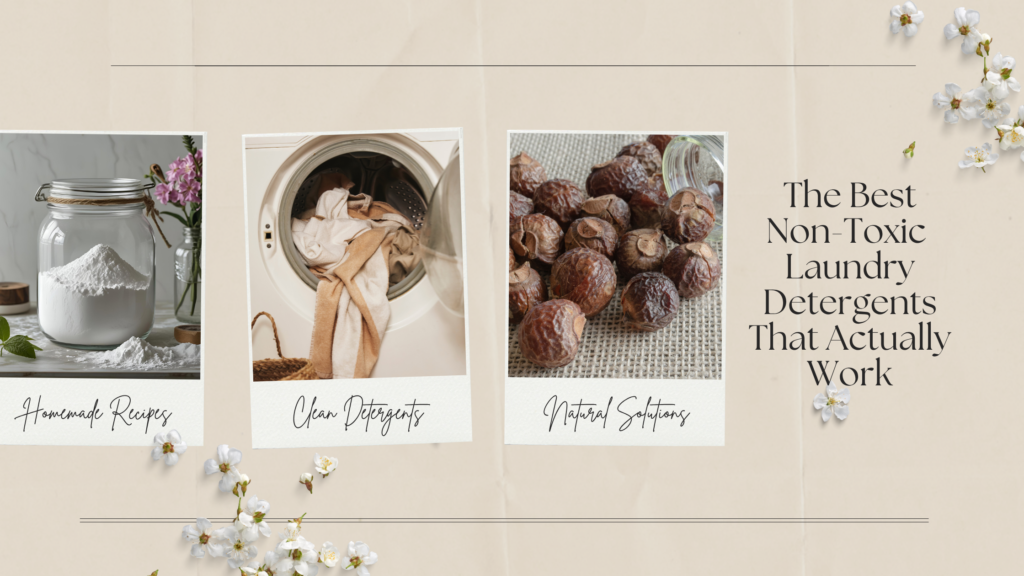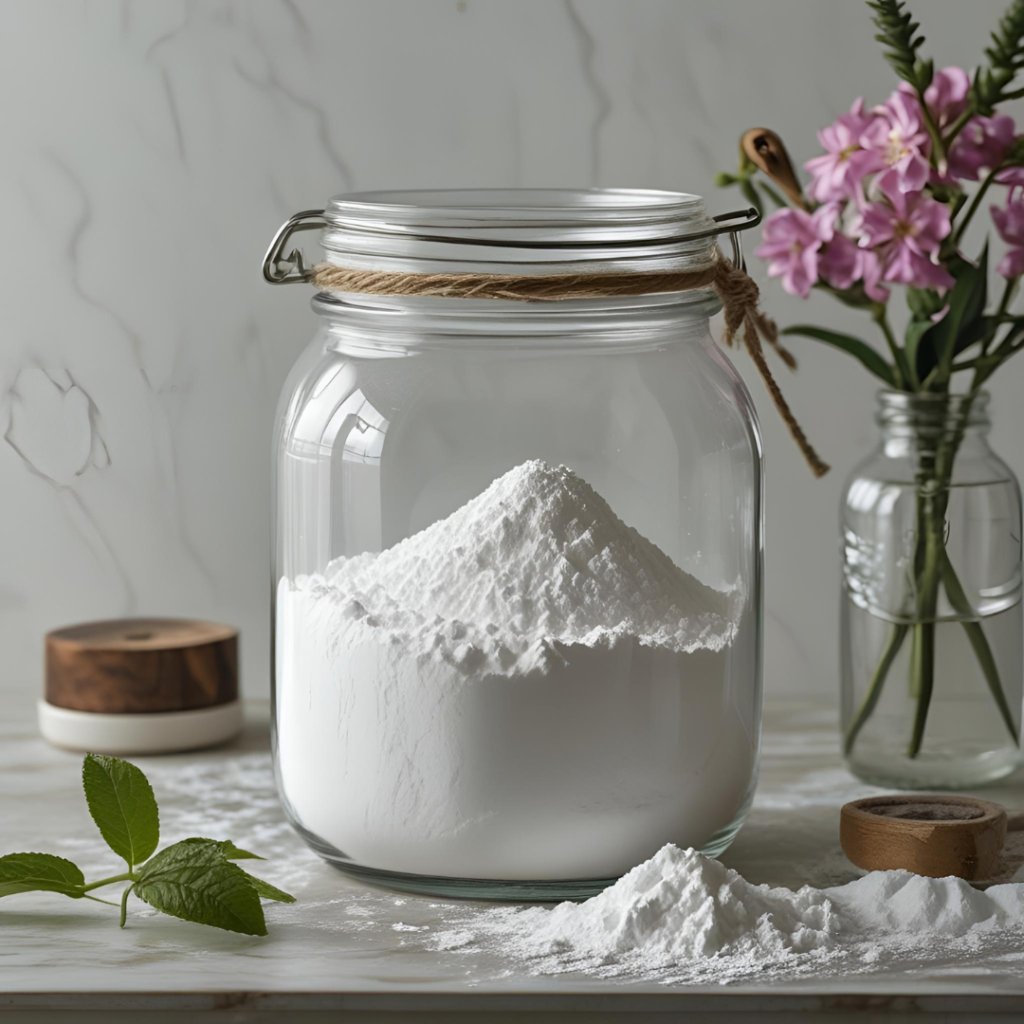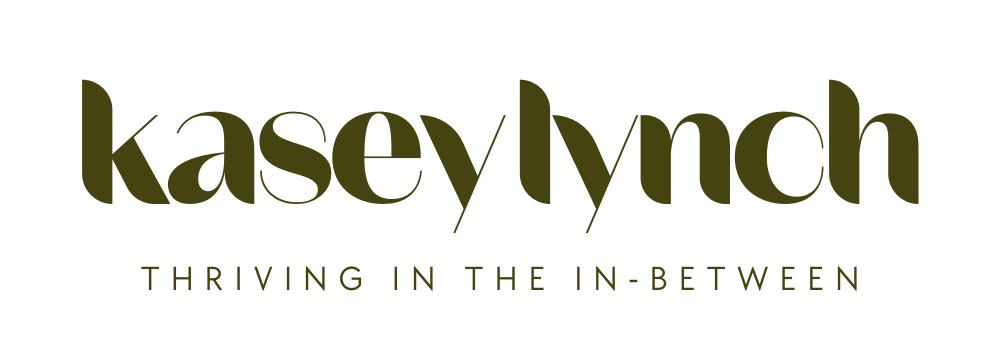
Let’s talk about laundry detergent, because for some of us, the wrong one doesn’t just mean itchy clothes. It means eczema flare-ups, sleepless nights, and a whole lot of trial and error.
My story? It started with a nickel allergy. No big deal, right? Until that turned into a full-blown, head-to-toe eczema reaction that lasted eight miserable months. I’m talking waking up in the middle of the night, scratching my arms and legs raw, unable to get relief no matter what I did. I even slept with mittens and socks on…
The dermatologist’s solution? Prednisone and bi-weekly injections because “I had eczema now.” That’s it. No curiosity about what might actually be causing my skin to freak out — just a prescription pad and a “good luck out there.”
Spoiler alert: I didn’t want to live on steroids forever or be tied to a doctor’s appointments for injections. So I took matters into my own hands.
I started cleaning up every part of my routine. I stopped eating gluten for a few months. I simplified my skincare. And then I started eyeing my laundry detergent. Switched it. Then switched it again. I also took cleansing and calming baths with Epsom salts, colloidal oatmeal powder, and tea tree oil (these saved my sanity and healed my skin).
Related: Soothing the Itch: Indulgent Bath Rituals for Eczema Relief
Eventually, my skin calmed down enough to do a proper patch test, and we finally figured out the culprit: Propylene Glycol — a universal solvent that was hiding in my shampoo, conditioner, and yes, the free and clear laundry detergent recommended to me by my dermatologist.
From that moment on, I became that friend. The one people text when they’ve had a reaction to something and need a clean swap. Between my own eczema journey and my dog’s sensitive skin, I’ve tested more products than I care to count. And honestly? Most of what’s on the market is garbage.
If you’re looking for non-toxic laundry detergent that won’t light your skin on fire, here are my top picks.
The Best Non-Toxic Laundry Detergents (Tried & Tested By Me)
Pronounce Laundry Detergent
Handmade in small batches, Pronounce Laundry Detergent is a truly minimal, non-toxic option that’s great for sensitive skin. It’s crafted by a certified herbalist with a focus on whole, recognizable ingredients.
- What’s inside: Washing soda, baking soda, organic castile soap, and optional essential oils—no fillers, synthetics, or preservatives
- Free from: Propylene glycol, synthetic fragrance, dyes, enzymes, optical brighteners, and all the unpronounceable stuff
- Good for: Those seeking a stripped-down, skin-safe detergent that still leaves clothes clean and fresh—especially ideal if you react to even “natural” store-bought brands
- Format: Powder
Comes in sustainable packaging and is available both scented and unscented, so you can customize your laundry routine.
Molly’s Suds Original Laundry Powder

Molly’s Suds Laundry Powder is the real deal. Simple, effective, no fluff (and no Propylene Glycol). Just five ingredients and clothes that feel actually clean.
- Why it’s great: Made with just 5 earth-derived ingredients, no synthetic chemicals or fillers
- Free from: Propylene glycol, fragrance, dyes, SLS, SLES, optical brighteners
- Good for: Sensitive skin, eczema, babies, and cloth diapers
- Format: Powder
Seventh Generation Free & Clear (Liquid)

Not all Seventh Gen products are created equal. Skip the “booster” pods or concentrated formulas and stick with the plain unscented (or lavender) liquid detergent.
- What’s inside: Plant-based surfactants, water softeners, and stain-fighting enzymes.
- Free from: Synthetic fragrances, dyes, and optical brighteners
- Good for: People who want a more natural detergent that’s easy to find at mainstream stores, and who don’t have severe sensitivities to ingredients like enzymes or mild preservatives
- Format: Liquid
While it’s marketed for sensitive skin, some formulas do contain propylene glycol — so be sure to check the label of the specific bottle you’re buying.
Dropps Unscented Pods
Dropps is great if you pick the right one. Their sensitive skin, unscented pods are a solid option, especially if you’re trying to cut down on plastic waste.
- What’s inside: Plant-based surfactants, water softeners, and cleaning boosters. No harsh chemicals or synthetic fragrances
- Free from: Propylene glycol, dyes, synthetic fragrance, chlorine, optical brighteners, and enzymes
- Good for: Sensitive skin, eczema, babies, and those looking to reduce plastic waste with a low-waste lifestyle
- Format: Pre-measured pods (liquid in a water-soluble film)
Some of the “lightly scented” options are NOT gentle — trust me. Make sure you choose a scent you know your skin is okay with, or you’ll likely have a mild reaction.
Dr. Bronner’s Sal Suds Biodegradable Cleaner
The king of all non-toxic cleaners: Dr. Bronner’s! This company prioritizes simple ingredients and multi-purpose versatility powered by plants. It’s free from synthetic detergents and gentle enough for sensitive skin when properly diluted.
- Why it’s great: Technically a multi-surface cleaner, but works well as a highly concentrated laundry detergent too.
- Free from: Propylene glycol, synthetic fragrances, dyes, and petrochemicals.
- Good for: Minimalist routines, environmental concerns.
- Format: Liquid concentrate (dilute before use)
Recommended Ways to Dilute Dr. Bronner’s
- Basic laundry wash: Mix 1 tablespoon of Sal Suds with 1 cup of water for a single load in a standard washing machine
- High-efficiency (HE) washers: Use about 1 teaspoon of Sal Suds diluted in 1 cup of water per load, since HE machines require less detergent and produce less suds
- Pre-soak or hand-washing: Add 1 teaspoon to 1 tablespoon of Sal Suds per gallon of warm water, depending on how soiled the clothes are
DIY Non-Toxic Laundry Detergent Recipe

If you like knowing exactly what’s in your detergent, this one’s for you. Here’s my go-to recipe:
- 1 bar Dr. Bronner’s Castile soap, grated (I like the lavender one)
- 1 cup Borax
- 1 cup washing soda
- Optional: a few drops of essential oil (if you know your skin can handle it)
It’s affordable, customizable, and actually kind of fun to make. You feel like a pioneer woman, but make it skin-safe.
P.S. Don’t try to make a liquid version right out of the gate. It requires more materials and separates easily. Plus, it’s messy and likely to leak. Trust me.
Soap Nuts for Laundry
For those of you who want to go all the way back to nature, soap nuts are a legit option. Soap nuts are a 100% natural, plant-based laundry detergent alternative. They’re literally dried berries that release natural saponins when soaked in water!
- Why they’re great: Soap nuts are a 100% natural, plant-based laundry detergent alternative derived from the shells of the soapberry tree, perfect for sensitive skin and zero-waste lifestyles
- What’s inside: Natural saponins — plant-based cleaning agents that gently lift dirt and oils without harsh chemicals
- Free from: Propylene glycol, synthetic fragrances, dyes, enzymes, and preservatives
- Good for: People with eczema or allergies, babies, those avoiding all synthetic ingredients, and eco-conscious households seeking biodegradable, compostable laundry options
- Format: Whole dried shells or pre-packaged laundry bags that release cleansing saponins when agitated in water
I’ll be honest, these work pretty well, all things considered. They have a pleasant smell and are reusable up to three to five washes! The only downside is that they don’t tighten up the fibers in your fabrics the way other detergents do.
Bonus: Pet Laundry Detergent Odor Remover – Active Enzyme Based Powder
While many of the detergents on this list are gentle enough for both you and your furry friends, for dog beds, blankets, and other pet items that tend to hold onto stubborn odors, this enzyme-based pet detergent like this one is your best bet to tackle tough smells and stains effectively.
- HE washer friendly: Works effectively in high-efficiency machines without excess suds
- Natural and safe: Free from harsh chemicals and synthetic fragrances, making it gentle for sensitive pet skin and your family
- Multi-action: Removes stains, neutralizes smells, and deodorizes in one easy wash
- Easy to use: Powder form dissolves well and can be added directly to laundry loads
How to Switch Laundry Detergents Safely After an Allergic Reaction
If you’ve dealt with itchy skin, hives, or full-blown eczema flare-ups from laundry detergent, you’re not alone — and switching detergents can feel intimidating when your skin is already reactive. Here’s a step-by-step plan to make the transition to a non-toxic detergent as gentle and effective as possible:
1. Deep Clean Your Washing Machine
Before introducing a new detergent, you need a clean slate—literally. Residue from past detergents (including fragrance, softeners, and chemical preservatives) can linger in the drum, detergent drawer, and seals of your machine.
- Run a cleaning cycle using Affresh washing machine tablets (or a similar cleaner designed for residue removal)
- Wipe down the inside of the drum, rubber gasket, and detergent drawer with a mix of vinegar and hot water
- Let everything dry completely before your next load
This step is often skipped, but it’s key to preventing cross-contamination that could trigger lingering skin reactions.
2. Choose the Right Non-Toxic Detergent
Refer to the list above to find non-toxic laundry detergent options that have worked well for me! If you want to branch out, look for one that’s:
- Free from: Propylene glycol, synthetic fragrance, dyes, optical brighteners, and harsh preservatives like methylisothiazolinone
- Formulated for: Sensitive skin, babies, or eczema
- Bonus: Products that are EWG Verified or dermatologist-tested for sensitive use
3. Rewash Your Most-Worn Clothing, Favorite Towels, and Go-To Bed Sheets
Clothing you wear frequently, towels you use regularly, and even your bed sheets may still carry residues from your old detergent. Here’s the best way to remove any trace of old detergent before switching to a new solution:
- Rewash them in your new non-toxic detergent
- Add an extra rinse cycle to remove any leftover irritants
- If you’re extremely sensitive, rewash towels, underwear, and sleepwear first and rotate others over time
For an extra layer of cleanliness, soak your towels and sheets in a laundry stripping bath to remove dirt and detergent before washing them with the new detergent.
4. Skip Fabric Softeners & Dryer Sheets
Even unscented dryer sheets can contain chemicals that aggravate skin conditions. Opt for wool dryer balls or simply line-dry whenever possible. I love my wool dryer balls and have used them for years!
5. Monitor Your Skin’s Reaction
Give your skin time to heal. If you’re still experiencing irritation after switching, double-check ingredient labels and consider rewashing clothes that may not have fully rinsed out older detergents.
What to Avoid When Choosing Non-Toxic Laundry Detergent
Even “free & clear” brands can sneak in ingredients that will irritate your skin over time. Here’s what I steer clear of after all these years of itch-testing:
- Propylene Glycol – enemy #1 in my world
- Fragrance – synthetic or natural, it’s usually unnecessary
- Methylisothiazolinone – a common preservative that’s extremely irritating for many people
- Optical Brighteners & Dyes – completely cosmetic and often allergenic
If you can’t pronounce it or it sounds like it belongs in a chemistry lab, it’s probably not something your skin wants to soak in all day.
Tips for Super-Sensitive Skin
- Double rinse your laundry to remove any lingering detergent
- Wash new clothes before wearing to remove factory residues
- Skip fabric softeners and dryer sheets, and use wool dryer balls instead. If you want to add a light scent, try adding a few drops of essential oil to the dryer balls — just make sure the oil is safe for your skin. Tea tree, lavender, and lemon work well for me.
- If symptoms persist, consider switching to baking soda and vinegar or soap nuts as ultra-gentle options
FAQ’s: Non-Toxic Laundry Detergents for Sensitive Skin
Q: What ingredients should I avoid in laundry detergent if I have sensitive skin?
Avoid synthetic fragrances, dyes, propylene glycol, sulfates (like SLS and SLES), optical brighteners, parabens, and harsh preservatives like methylisothiazolinone. These can trigger irritation or allergic reactions.
Q: Is propylene glycol harmful in laundry detergent?
Propylene glycol can cause skin irritation and allergic reactions in some people, especially those with eczema or highly sensitive skin. That’s why many seek detergents that exclude this ingredient.
Q: Are natural detergents as effective as conventional ones?
Yes, many plant-based detergents and alternatives like soap nuts effectively clean clothes without harsh chemicals, though they may require a bit more time or occasional use of boosters for heavy stains.
Q: Can I use soap nuts for all types of laundry?
Soap nuts are safe for most laundry, including delicates and baby clothes, but they might be less effective on very greasy or heavily stained items without additional boosters.
Q: How do I know if a detergent is truly fragrance-free and non-toxic?
Look for products labeled “free & clear,” check ingredient lists for known irritants, and consider certifications like EWG Verified or USDA Organic. Avoid vague terms like “natural fragrance” without further details.
Q: Can I use these detergents in high-efficiency (HE) washing machines?
Most non-toxic detergents are compatible with HE machines, but always check the product label for HE approval to prevent excessive sudsing.
Q: How can I reduce irritation from laundry detergent?
Use fragrance-free, dye-free detergents without harsh chemicals, rinse clothes thoroughly (consider double rinsing), avoid fabric softeners, and wash new clothes before wearing.
Treat Your Skin With Care, Starting With Your Laundry Detergent
I wish I could say there was a magic cream or one-time fix that cleared my eczema. There wasn’t. But slowly removing triggers and switching to products that actually support my body made all the difference.
Changing my detergent was one of the first real steps that gave me my skin (and sleep) back.
So if you’re in the thick of it — scratching, flaring, or just fed up — start here. The switch might seem small, but for sensitive skin, it’s often the simplest changes that have the biggest impact.
Got a favorite detergent that’s helped your skin? I’m always down to try a new clean option — drop it in the comments below!










Leave a Reply